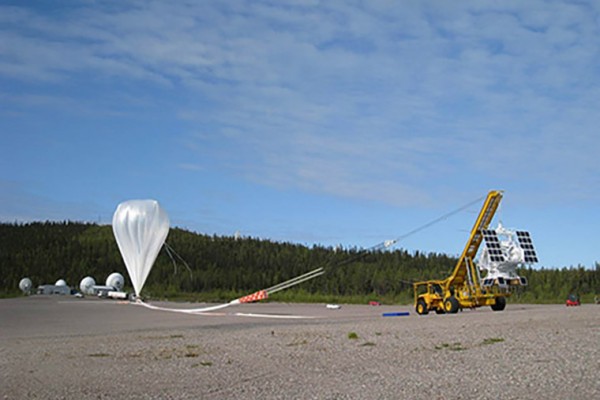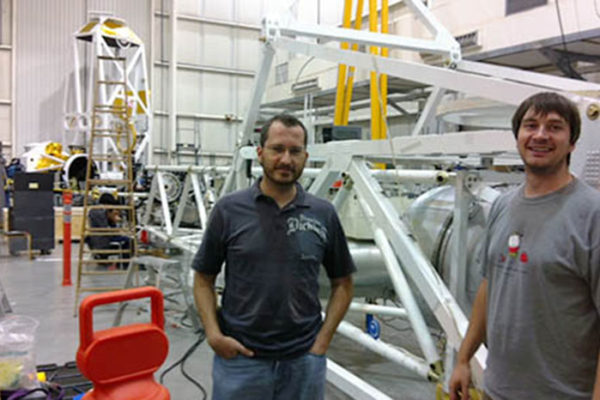Aiming for the stars
Early in September, the X-Calibur mission, preparing for launch at the Columbia Scientific Balloon Facility in Fort Sumner, N.M., put its pointing system through its paces to make sure all of its parts were working in programmed harmony.
Balloon rise over Fort Sumner
In a few days, a balloon-borne telescope sensitive to the polarization of high-energy “hard” X rays will ascend to the edge of the atmosphere above Fort Sumner, N.M., to stare fixedly at black holes and other exotic astronomical objects. It will be carried aloft by a stratospheric balloon that will expand to a sphere large enough to hold a 747 jetliner the float height of 120,000 feet, three times the height at which commercial aircraft fly and on the edge of Earth’s atmosphere. Launching the balloon is not child’s play.
Balloon-borne astronomy experiment X-Calibur racing to hit wind window
In a few days, a balloon-borne telescope sensitive to
the polarization of high-energy “hard” X-rays will ascend to the edge of
the atmosphere above Fort Sumner, N.M. Once aloft, the telescope will stare at black holes, neutron stars
and other exotic astronomical objects that shine brightly in the X-ray part of the spectrum in order to learn about their nature and structure. After years of preparation, the X-Calibur team is racing to get the experiment mission-ready in time for the stratospheric wind event they hope to ride.


